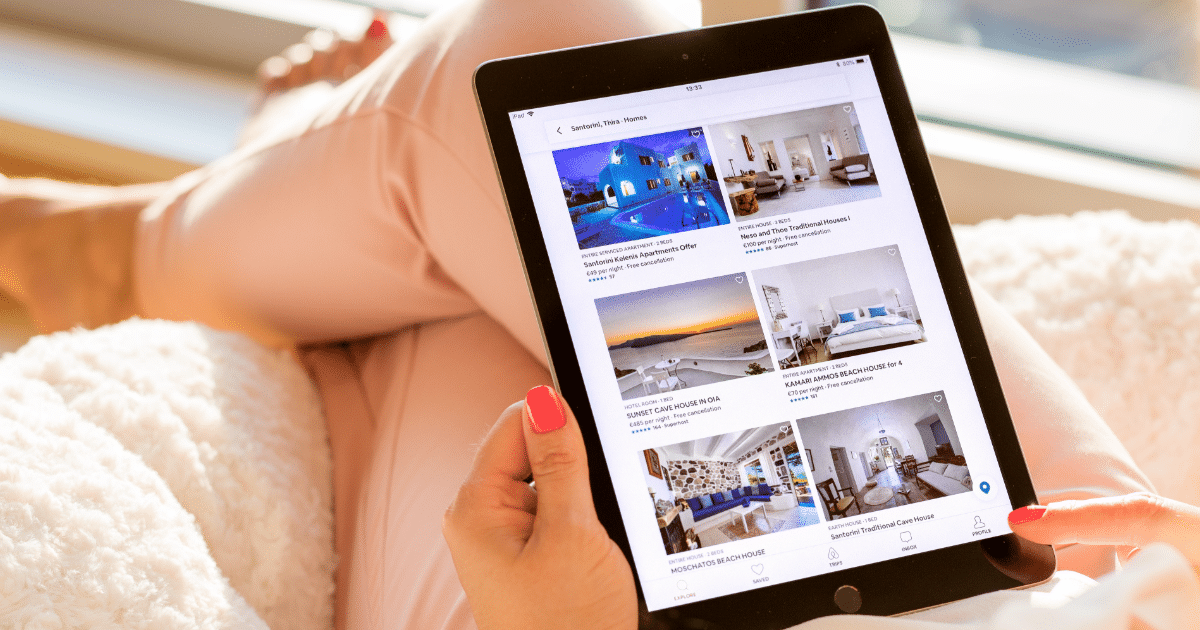How Effective is Display Advertising: What’s Working and What’s Not Working Now
August 8, 2025

B2B display advertising is everywhere, but does it still deliver real results? Marketers are under pressure to prove ROI in an environment plagued by low CTRs, shrinking cookie access, and increasing noise. Banner blindness is real. So is fatigue with generic metrics. The question isn’t whether display ads work; it’s whether we’re using them the right way.
When powered by intent data, audience-level accuracy, and smart orchestration, display can move more than impressions. It can move pipeline. But that means rethinking how we define success and redesigning how we deploy. Display isn’t about the click. It’s about the close.
Display Advertising That Works and What It Actually Means
Marketers often ask, “How effective is display advertising?” The answer depends on how you define effectiveness. If you’re focused on CTR alone, you’re missing the bigger picture. In today’s data-driven marketing environment, display ads should be measured by their contribution to pipeline, not just performance on a dashboard.
To get there, marketers must shift toward modern metrics:
- View-through conversions: Track users who saw an ad but converted later via another channel.
- Brand lift: Measure changes in brand awareness or consideration among exposed audiences.
- Multi-touch attribution: Account for display’s role across the entire buyer journey.
Especially in mid- to top-of-funnel campaigns, display works best when integrated with retargeting and ABM strategies. Aligning your tactics to buyer journey stages, backed by solid measurement, ensures you’re not just showing ads, you’re moving deals forward.
Are display ads cost effective? Only when tied to outcomes beyond the click.
So, if clicks aren’t the benchmark anymore, how does display compare to other digital channels, and where does it still shine?
How Display Advertising Holds Up in Today’s Digital Marketing Mix
Display advertising can still pull its weight, if you evolve your approach.
Compared to formats like native or social, display can feel outdated, but that’s only if you’re using outdated methods. Today’s top-performing campaigns use AI-driven bidding, contextual targeting, and intent-led segmentation to boost relevance and reach. While attention spans are dropping, smart targeting keeps your ads in front of decision-makers when it matters most.
Imagine this: A B2B buyer visits your product page, leaves, and two days later sees a personalized display ad on their industry publication. It pulls them back into your orbit, right where you can keep the conversation going. That’s not just visibility, that’s momentum.
So, is display advertising effective in digital marketing? When it’s part of a multichannel strategy and aligned with intent, absolutely.
And while a high percentage of display ads are never seen, that’s not a dealbreaker. With the right partners and placements, viewability can be optimized, ensuring your message lands where and when it matters.
Beyond the Basics: The Real Advantages and Disadvantages of Display Advertising
Display advertising has its strengths and its blind spots. The key is knowing when and how to use it strategically.
The advantages of display advertising show up most clearly when it’s used to support a longer, more complex buyer journey:
- Scalable reach across key digital touchpoints: Ideal for staying visible in long buying cycles and building awareness across roles.
- Strong retargeting and ABM capabilities: Excellent for re-engaging high-intent buyers and surrounding decision-makers at target accounts.
- Measurable brand lift and mid-funnel engagement: Works well when layered into multi-channel nurture tracks, especially when you’re not expecting immediate clicks.
At the same time, there are clear disadvantages of display advertising, and they matter more than ever in today’s privacy-driven, data-conscious environment:
- Ad fatigue from stale creative: Audiences tune out repetitive visuals. Refresh ads regularly or personalize them dynamically to stay relevant.
- Privacy regulations reducing audience granularity: Cookies are fading. Marketers must rely more on first-party data and contextual targeting.
- Misaligned KPIs: Clicks rarely tell the full story. Marketers must move toward multi-touch attribution and view-through metrics.
Ultimately, the effectiveness of display ads comes down to targeting and intent. Without those, even the most polished ad won’t break through the noise or drive pipeline.
Types of Display Advertising That Work with Examples That Drive Results
To win with display, it’s not just about format. It’s about function and fit.
Some formats are meant to grab attention, not drive clicks, and that’s a good thing when they’re used at the right stage. The key is knowing which display type supports which funnel stage and how to tailor your creative to buyer intent.
Types of Display Advertising
- Static banners: Best for brand visibility and awareness-building at scale. These work well on industry news sites and can drive early-stage engagement when paired with clear, value-based messaging.
- Dynamic creative: Adjusts content in real time based on user behavior or attributes (e.g., company size, job title). Ideal for engaging mid-funnel audiences with personalized messaging.
- Responsive display: Automatically adapts to different devices and placements, perfect for maintaining consistency and reach across a wide digital footprint.
- Retargeting ads: Highly effective for re-engaging buyers who have already interacted with your brand (e.g., visited product pages, downloaded content). Best suited in MOFU and BOFU strategies.
For added punch, consider rich media. According to Forbes, video display ads generate 3x higher engagement than static ones, making them an essential part of your creative mix.
Examples That Work
- Mid-funnel retargeting: Serve dynamic ads with case studies to visitors who downloaded a comparison guide but haven’t scheduled a demo.
- Top-funnel awareness: Use static banners on niche media sites to build familiarity with your solution among specific job roles.
- Account-specific engagement: Deliver tailored messages to buying committee members from a target account, using enriched intent data to segment by behavior or stage.
So, what companies use display advertising effectively? Organizations looking to stay visible across a complex buyer journey, especially those focused on surrounding decision-makers through ABM and multi-touch engagement.
But format alone isn’t enough. To drive real pipeline, your display strategy must bring everything together: data, timing, targeting, and measurement. Creative is just the start. Execution is where the impact happens.
What Makes a Display Ad Strategy Successful and Where Most Go Wrong
Great display advertising isn’t about flashy design. It’s about aligning creative, data, and timing with your buyer’s journey.
You can have great creative and still miss the mark. Why? Because execution trumps aesthetics.
Before launching your next campaign, ask yourself: Are you just placing ads, or are you aligning every touchpoint to your buyer’s journey?
Smart Display Strategy
- Intent-based segmentation: Focus your spend on audiences actively researching solutions like yours.
- Multi-touch sequencing: Plan message progression across the funnel. Not every display ad should say “Contact Us.”
- Channel-specific creative: Design for how and where the ad will be seen (e.g., programmatic vs. industry publication).
- Continuous optimization and testing: Use A/B testing, heatmaps, and engagement data to adapt quickly and improve ROI.
Where Most Go Wrong
Don’t fall for vanity metrics. Focus on whether your ads are creating momentum, not just traffic.
- Targeting too broad or too generic: Wasting spend on audiences who aren’t in-market or aren’t your ICP.
- Measuring the wrong KPIs: Focusing on clicks alone instead of pipeline contribution and engagement quality.
- Skipping the alignment with sales or ABM goals: Running campaigns in isolation, which leads to fragmented buyer journeys and lower conversion rates.
Even strong campaigns fall short if they aren’t tied to goals and buyer behavior. Here’s how to keep your strategy grounded and effective:
- Target: Start with accurate, intent-rich data. Prioritize accounts that align with revenue goals.
- Activate: Customize creative and placements across your highest-performing channels.
- Optimize: If you’re not tracking multi-touch influence or post-impression conversions, you’re not seeing the full picture.
B2B Takeaway: What is a key benefit of display ads? Precision at scale, especially when driven by clean data and aligned to buyer behavior.
Display Ads Work If You Work Them Smart
B2B display advertising isn’t broken; it’s evolving. And it’s only as effective as the strategy behind it.
Here’s a quick recap of what to focus on and what to leave behind if you want your display campaigns to deliver real pipeline impact:
Do This
- Match creative to buyer stage.
- Test and optimize continuously.
- Track view-through and attribution.
Avoid This
- Chasing vanity metrics
- Targeting too broadly
- Running display in isolation
Success isn’t about who clicks. It’s about who moves and who converts. Those tactics only matter if they’re anchored in a broader strategy.
To win in 2025 and beyond, marketers need more than media buys and impressions. They need coordinated strategies that combine display, ABM, retargeting, and multichannel orchestration, grounded in clean, enriched data and guided by clear measurement.
That’s where we come in. DemandScience helps B2B marketers cut through complexity, targeting the right buyers at the right time, activating multichannel campaigns engineered for performance, and delivering transparent insights that prove what’s working and what’s not.
Display advertising isn’t a set-it-and-forget-it tactic. It’s a pipeline driver that, when fueled by clean data, buyer intent, and smart orchestration, can turn impressions into influence and influence into revenue. Treat it like an afterthought, and you’ll get forgotten. Use it with purpose, and you’ll own the conversation.
Ready to turn your display strategy into a revenue catalyst?
Supercharge your B2B marketing strategies today.










